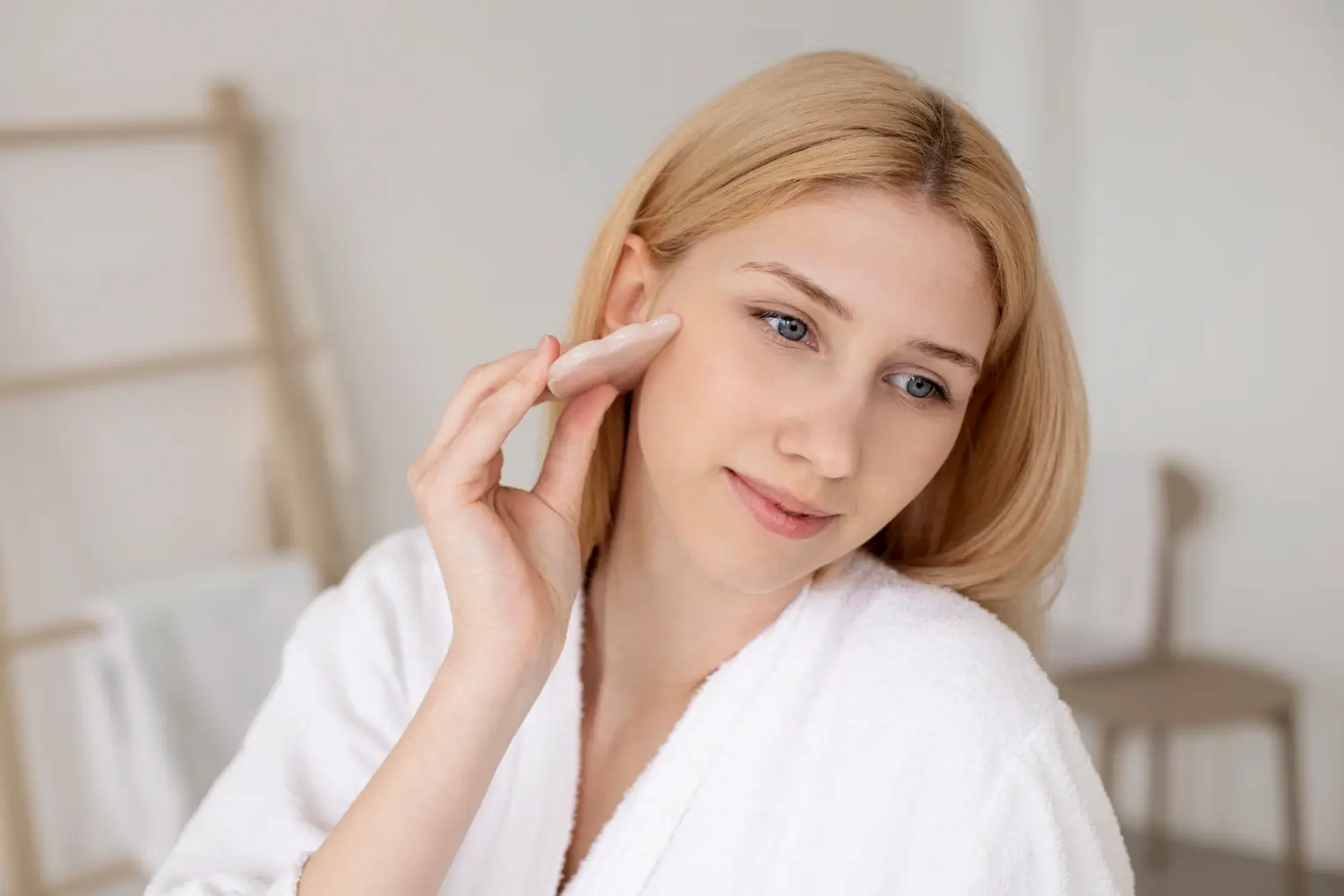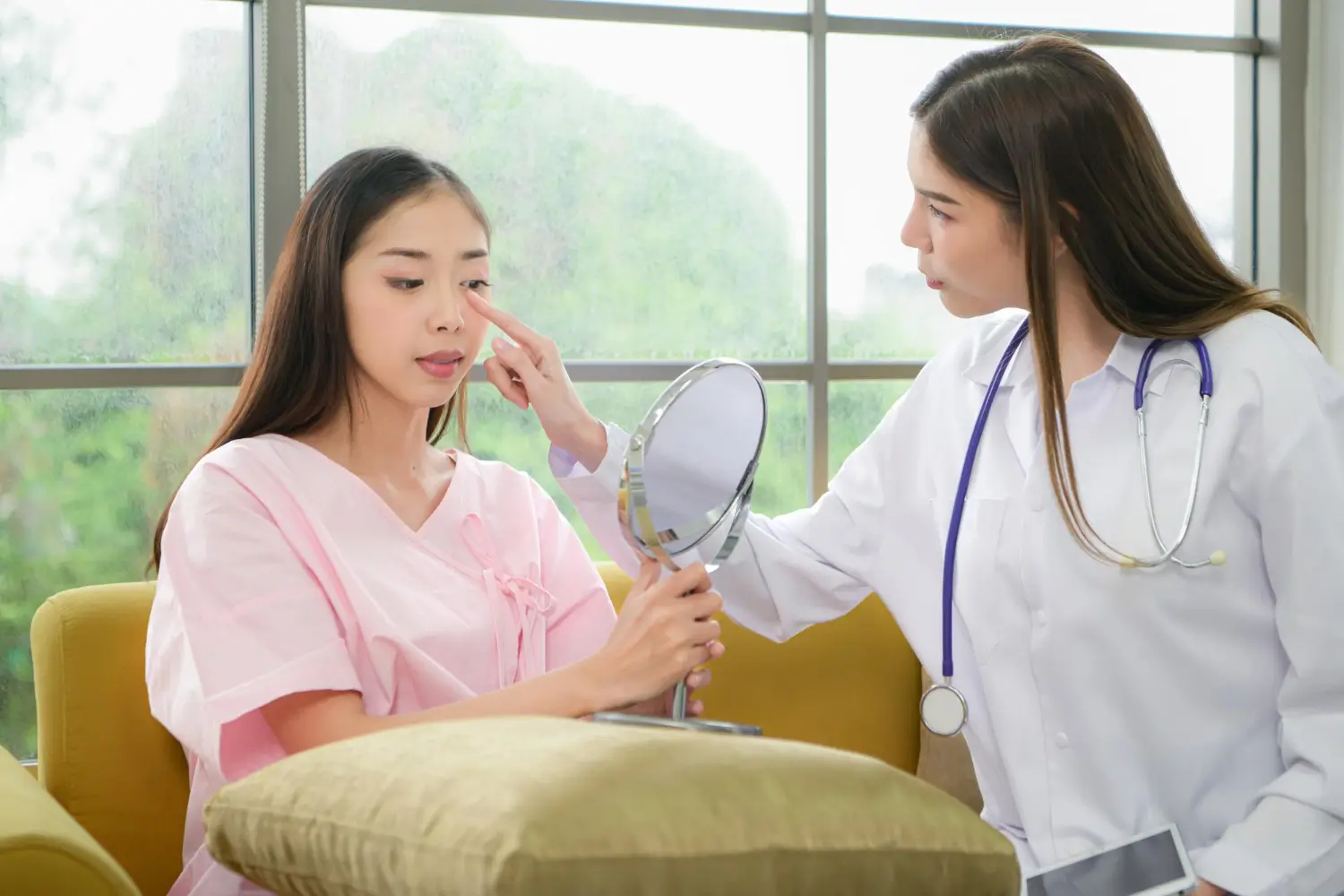According to the International Society of Aesthetic Plastic Surgery (ISAPS), over 18.8 million non-surgical aesthetic procedures were performed worldwide in 2022. This highlights the growing demand for minimally invasive treatments that offer effective results with minimal downtime.
Polynucleotides and Botox are popular options in this field, each offering unique benefits for skin rejuvenation. While Botox targets muscle activity to reduce wrinkles, polynucleotides enhance skin health by promoting collagen production and hydration.
This article will delve into the individual benefits of polynucleotides and Botox, their mechanisms of action, and how they can be combined for optimal skin rejuvenation.
Key Takeaways
- Polynucleotides stimulate collagen and skin regeneration, while Botox relaxes muscles to reduce wrinkles and fine lines.
- Botox targets expression lines, while polynucleotides improve skin hydration and elasticity, enhancing overall skin health.
- Botox smooths wrinkles and polynucleotides restore skin vitality, creating a more youthful and glowing complexion.
- Combining Botox and polynucleotides allows customized treatments, addressing both immediate wrinkles and long-term skin health.
About: Medical Spa RX provides medical practices with premium products at the best prices. If you’re looking to buy Polynucleotides for your practice, the sales representatives at Medical Spa RX can give you guidance.
Understanding Polynucleotides and Botox
Polynucleotides (PN) are chains of nucleotides, the essential building blocks of DNA and RNA. In cosmetic treatments, they play a vital role in stimulating collagen production and promoting cellular repair, leading to improved skin texture and elasticity.

On the other hand, Botox is derived from the botulinum toxin and works by temporarily paralyzing targeted muscles. This inhibition of neurotransmitter release smooths dynamic wrinkles and can also treat medical conditions like migraines or excessive sweating.
While polynucleotides rejuvenate the skin by enhancing its natural regenerative processes, Botox focuses on relaxing facial muscles to reduce expression lines. Understanding these distinct mechanisms underscores their complementary potential in cosmetic treatments.
Benefits and Applications
Polynucleotides are gaining recognition in the field of aesthetic medicine for their remarkable benefits in tissue regeneration and skin quality improvement. These natural DNA fragments play a pivotal role in cellular repair and regeneration processes. When applied to the skin, polynucleotides stimulate fibroblast activity, which enhances collagen production and promotes tissue healing.

This results in improved skin elasticity, hydration, and a more youthful appearance. Additionally, polynucleotides can aid in repairing damaged tissues, making them a valuable asset in treatments for skin conditions such as scarring, hyperpigmentation, and signs of aging.
On the other hand, Botox is widely renowned for its muscle relaxation and wrinkle reduction properties. Comprising a purified form of botulinum toxin, Botox works by temporarily inhibiting nerve signals to targeted muscles. This results in a relaxation of the muscles, thereby reducing the appearance of dynamic wrinkles caused by repetitive facial movements, such as frown lines and crow’s feet.
Beyond aesthetic applications, Botox has proven beneficial in medical treatments for chronic migraines, excessive sweating, and certain muscular disorders. Its dual role in both cosmetic and therapeutic fields underscores its versatility and effectiveness.
While polynucleotides enhance skin quality and foster tissue regeneration, Botox is a powerhouse for muscle relaxation and wrinkle reduction. Together, they offer complementary approaches to achieving healthier, more youthful skin.
Complementary Effects of Polynucleotides and Botox
Polynucleotides (PN) and Botox offer distinct yet complementary benefits in aesthetic medicine, making their combined use a powerful approach for comprehensive skin rejuvenation.
When used together, these treatments tackle aging on multiple fronts. Polynucleotides enhance skin’s foundational health and resilience, while Botox smooths expression lines, delivering a natural and youthful appearance. This synergy allows practitioners to customize treatments for patients seeking both long-term skin revitalization and instant wrinkle correction.
Patient Suitability and Treatment Protocols
It is essential to choose the right candidates for Polynucleotide and Botox treatments. Polynucleotides can be used as a preventive measure by younger individuals, while skin rejuvenation benefits older clients.

Botox is ideal for reducing fine lines and wrinkles. Doctors must consult with patients beforehand to ensure both treatments are suitable and will work effectively together for optimal results.
Recommended Treatment Protocols for Combining Polynucleotides and Botox
After determining who can receive polynucleotides and Botox treatments, let’s discuss how to combine them properly. Combining these treatments benefits the skin in many ways.
- Start with Botox injections. They smooth wrinkles fast, lasting from three to six months.
- Wait two weeks after getting Botox before starting polynucleotide treatments. This gap ensures both treatments work well together.
- Give polynucleotide shots to the skin every 14 to 21 days. At first, do this for four sessions. These shots help the skin regenerate and make more collagen.
- Check how the skin is doing after these cycles. If needed, plan more sessions based on the person’s skin response.
- Use skilled techniques for each treatment. This keeps risks low and makes sure people get good results.
- Talk a lot with patients about what they should expect. Knowing possible outcomes makes people happier with their results.
These steps can help doctors give their patients better-looking skin by carefully and effectively combining polynucleotides and Botox.
Results and Expectations
Using Polynucleotides and Botox together yields impressive results, improving skin texture and elasticity and reducing wrinkles. Polynucleotides enhance skin health by boosting hydration and stimulating collagen, while Botox smooths fine lines by relaxing muscles. This combination provides a natural, youthful appearance.
Patients see smoother, firmer skin with enhanced tone. A two-week gap between Botox and polynucleotide treatments is recommended to achieve optimal results. Clear communication and discussion of potential polynucleotide side effects during consultations are essential to set realistic expectations and ensure patient satisfaction with these complementary treatments for youthful, refreshed skin.
Conclusion
Polynucleotides and Botox complement each other, improving skin over time. This combination offers immediate smoothing and long-term skin health benefits, reducing wrinkles and enhancing texture. Doctors recommend this safe, effective treatment for people looking to rejuvenate their skin and achieve a smoother, more youthful appearance.
FAQs
1. What is the difference between polynucleotides and Botox?
Polynucleotides and Botox are both used in cosmetic treatments but function differently. Botox relaxes facial muscles to reduce wrinkles, while polynucleotides promote skin regeneration by repairing damaged cells.
2. Can polynucleotides treat hair loss?
Yes, polynucleotides may stimulate hair growth by revitalizing the scalp’s skin cells, as supported by some studies.
3. How often should I undergo polynucleotide treatments?
Treatment frequency depends on individual needs. A healthcare professional may recommend more frequent sessions for hair loss or specific conditions.
4. Are there any known side effects of polynucleotide treatments?
Polynucleotide treatments are generally well-tolerated, though some may experience mild side effects, such as redness or swelling at the injection site.
References
Haddad A, Avelar L, Fabi SG, et al. Injectable Poly-l-Lactic Acid for Body Aesthetic Treatments: An International Consensus on Evidence Assessment and Practical Recommendations. Aesthetic Plastic Surgery. Published online November 26, 2024. doi:https://doi.org/10.1007/s00266-024-04499-9
Alvin W, Chan L, Lee A, et al. Polynucleotides in Aesthetic Medicine: A Review of Current Practices and Perceived Effectiveness. International Journal of Molecular Sciences. 2024;25(15):8224-8224. doi:https://doi.org/10.3390/ijms25158224





















